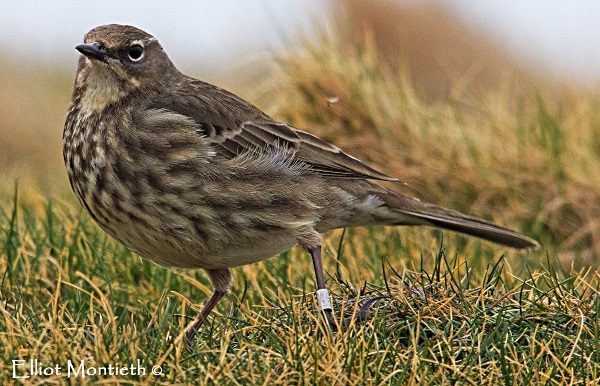Site menu:
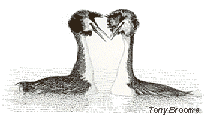
April 2016 Newsletter
Birds in Abundance!
Colour Ring Report.
March Bird News.
Forthcoming Events.
Latest Newsletter.
Birds in Abundance!

It was a delight to be so close to so many of these ducks.
The recent publishing of 'Birds of Conservation Concern 4'
is another reminder of the pressure our birds are under with threats
seemingly coming from almost every activity of mankind. I would list
some of these threats but that would be too depressing. Instead,
despite the doom and gloom, there is good news locally
with quite dramatic increases in some species - and it's
fantastic
that in this day and age we can still see these birds in
abundance.
Common Scoter
"Zillions of scoters" was the original
report as thousands
poured into Liverpool Bay on February 11th. They were flying in a
steady stream (see video) thus,
unusually for
Scoters, making them relatively easy to count and over a 40 minute
period the total was 36,000. But many more, quite possibly as many
again, were already on the sea and these were impossible to estimate,
hence the bar chart is annotated with "70,000??"!
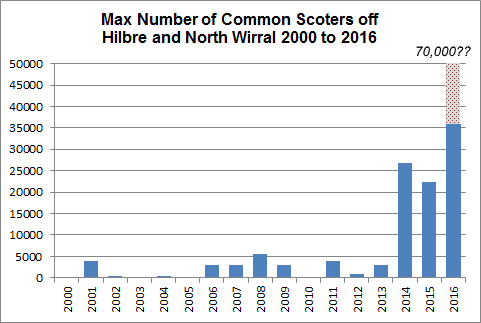
They are remarkable numbers by any standard,
and it is the third year in a row we've had these enormous flocks.
These peak numbers always occur between February and April and
therefore it seems likely that these are birds on their way north after
wintering further south. Although such numbers are
unprecedented
off the Dee estuary/North Wirral coast they are not unknown in
Liverpool Bay as a whole with counts ranging from 60,000 to 79,000
during aerial surveys between 2001 and 2007 before most of the wind
farms were built - interestingly,
max counts
during those surveys were also during February and March. The majority
of scoters, many out of sight of land, were off North Wales and
Blackpool at that time, so there must have been a shift in location
since then to North Wirral and they are presumably exploiting a food
source they haven't used before.
Some people have suggested that wind farms have caused this change of location, either due to disturbance pushing them away from, for example, the huge Gwynt-Y-Mor wind farm off North Wales, or, in contrast, perhaps the benign underwater conditions under the turbines, where shellfish can grow undisturbed, is attracting them to the Burbo Bank windfarm off Wirral. A lot of off-shore/aerial surveying would have to be done to establish if either is the case. It is quite possible that the wind farm operators are doing these very surveys but they are VERY reluctant to give out any data in case it is used against them. Liverpool Bay is a Special Protection Area and Common Scoters are a named feature of the SPA.
Further reading (click link to read article):
1. Common Scoters, Liverpool Bay SPA and Windfarms - Dee Estuary website July 2008.2. Common Scoters - Dee Estuary website May 2014.
3. HOW Many Scoters!!?? - Dee Estuary website May 2015.Great Crested Grebes

Over the past 10 years the sea off North Wirral has become one of the most important sites in the country for this species. The five year average of 1,008 (2011 to 2015) puts the area second only to Dungeness and Rye Bay where numbers have also been increasing including a massive 3,000 in January 2013. Coincident with these increases there has been a large drop of Great Crested Grebe numbers in Northern Ireland, for example in Belfast Lough there was a max count of 2,095 in the winter of 2005/06 which had dropped to just 234 by 2013/14, so that's may be where they have relocated from.
At high tide they lie in large rafts between Hoylake and Leasowe Lighthouse but they are a long way out and you need a decent telescope to see them, a flat calm sea and bright conditions are also essential if you want to count them.
Further reading (click link to read article):
Great Crested Grebes off North Wirral - Dee Estuary website December 2010.Pink-footed Geese
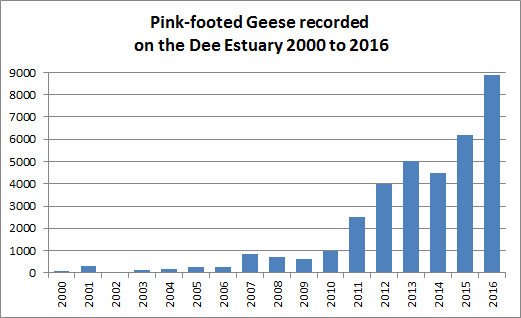
Who can fail to be moved by flocks of geese flying in V-formation overhead calling musically to each other? I know I am and it's been one of the highlights of my birding life to see Pink-footed Geese increase dramatically on the Dee estuary over the past few years. Over-shooting in the first half of the 20th century meant the geese deserted the estuary and for decades there were none present other than the rare flock of a 100 or so, now they are here in record numbers.
This past winter they have been using the full extent of the marshes - from Burton all the way down to Heswall but nobody was expecting the huge count of 8,500 on Burton Marsh on February 28th, with an additional 400 at Parkgate counted at the same time that made for an outstanding total of 8,900.That number is small beer compared with some sites, of course, the nearby Alt Estuary had over 18,000 in 2013 and Martin Mere had 29,400 the same year - but for the Dee estuary it's fantastic!
Further reading (click link to read article):
Geese on the Dee Estuary - Dee Estuary website January 2012.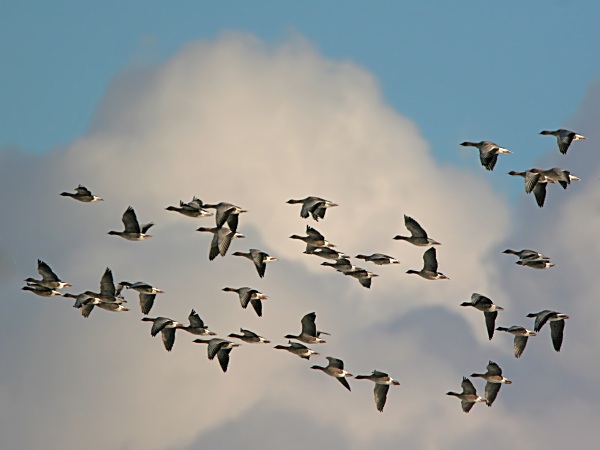
Acknowledgements
for this article:
1. Scoter counts have been made by many people over the years but particular thanks go to the Wetland and Wildlife Trust for carrying out and publishing the data from their aerial surveys, and also to local birder Jane Turner for undertaking regular counts off North Wirral.
2. As well as myself regular Great Crested Grebe counts have been carried out by Hilbre Bird Observatory, David Haigh and Jane Turner for which many thanks.
3. Pink-footed Geese have been counted by many people including those carrying out Wetland Bird Surveys, particular thanks go to the RSPB for their counts and to the fact they bought so much of the marshes which has provided the safe habitat the geese obviously love.
Richard Smith
Colour Ring Report
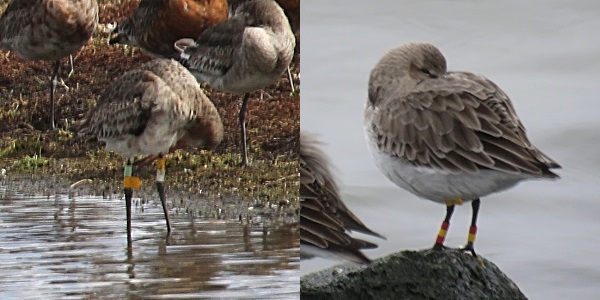
Recording of Colour-ringed birds remains very slow. There was a delay
getting feedback from some Danish ringed Black-headed Gulls but that
has now been received and these are reported below.
Black-tailed Godwit
YW-LYflag. Ringed
as a chick on July 12th in northern Iceland.
Recorded on March 9th 2016 at Burton Mere Wetlands.
First record after ringing was at RSPB Oakenholt Marsh in October 2012.
Apart from one visit to Carr Lane Pools, next to the Mersey Estuary in
August 2013, it has never been seen away from the Dee Estuary where it
has been seen many times every year since 2012, it is always one of the
first birds back in mid-July and stays in the area until the autumn.
There are very few December records and none for January or February so
we have no idea where it spends the winter. Spring visits have
been very brief.
Dunlin
Yflag//RYR-RY.
Ringed at Jade Bay, German Wadden Sea, on May 15th 2010.
Recorded on the rocks by West Kirby Marine Lake on February 26th 2016.
Also recorded at West Kirby Marine Lake on December 9th and 10th 2015,
no other records.
Black-headed Gulls
VK63 (black letters on white ring). Ringed as a chick at Hirsholm island off NE Denmark on June 9th 2011.Recorded at Hoylake shore on January 23rd 2016.
Also recorded at the ringing site in July 2011, no other records.
4HM (Black letters on white ring). Ringed as an adult at Utterslev Torv, Copenhagen, Denmark, on March 28th 2015.
Recorded at New Brighton on March 5th 2016, no other records.
Richard
Smith and Matt Thomas.
Colour-ringed birds were also recorded by Allan Patterson and Colin
Schofield.
March Bird News
As you see from the table below the
first migrants were late this year, this was due to a high pressure
system and accompanying north winds which effectively blocked the
northwards passage.
| Species | 2016 | Location | 2015 | 2014 |
|---|---|---|---|---|
| White Wagtail | 15th March | Hilbre | 10th March | 8th March |
| Sand Martin | 16th March | Neston | 7th March | 20th March |
| Wheatear | 23rd March | Meols | 11th March | 10th March |
| Swallow | 24th March | Shotton | 20th March | 19th March |
| Willow Warbler | 29th March | Leasowe
and Thurstaston |
22nd March | 12th March |
| House Martin | 31st March | 29th March | ||
| Whitethroat | 12th April | 4th April | ||
| Swift | 19th April | 3rd May | ||
| Cuckoo | 20th April | 2nd May |
Unfortunately the same weather meant that the spring tides were a bit of a none event and barely made it into the Riverbank Road (Heswall) viewpoint, and nowhere near Parkgate. The highest count of Short-eared Owls were five out hunting off Heswall Golf Course well after high tide on the 10th. Also seen at Heswall were a Spoonbill, 4 Water Rails and two Hen Harriers.
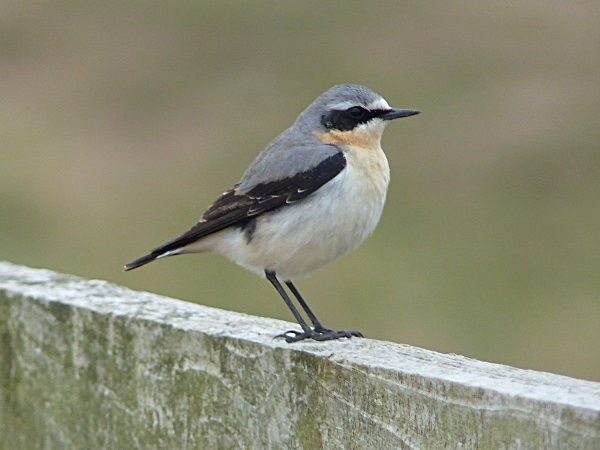
The area around Neston Sewage Works was of much interest with at least
three Water Pipits, Cetti's Warblers, a Firecrest and at least one
Siberian Chiffchaff, a pity that some people don't
seem to realise that if you get too close to birds you will flush them,
harming the birds and the enjoyment of everyone else.
Common Scoters numbers remained very high but were always way too far
out to be able to do a sensible count - but probably at least 30,000 -
and one Surf Scoter was off Hoylake (11th). It's not been a
particularly good winter for Scaup so it was good to see six off Hilbre
on the 11th. There were a few Eiders around including three of Heswall,
where they are quite rare, with two males displaying to a female. Two
Long-tailed Ducks flew past Red Rocks on the 7th and 16 Red-throated
Divers were on the sea off Hoylake on the 8th.
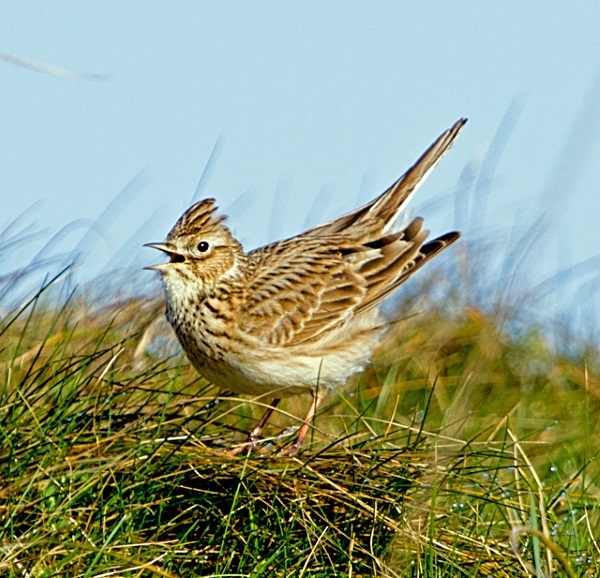
There were plenty of Great White Egrets recorded including three on
Burton Marsh on the 25th, we hope they might breed this year although I
haven't heard of any activity so far. There's been a particularly good
passage of Siskins with max count of 30 in a garden in Newton, lots
have been ringed in the area including 100 in Great Sutton - I'm a bit
upset that not a single one visited my garden!
Other highlights included a Black
Redstart by the Harp Inn,
a Spoonbill and Iceland Gull past Hilbre and nine Stonechats
along north Wirral.
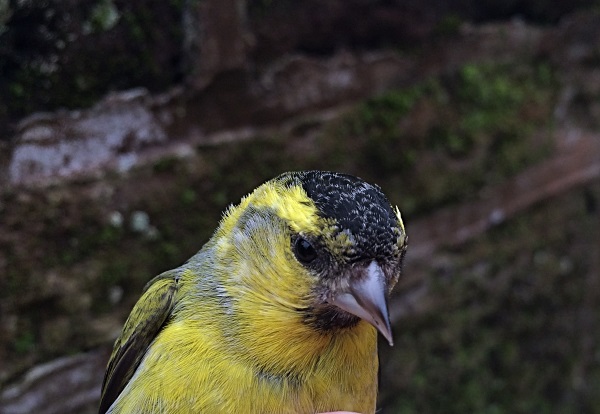 Siskin at Newton, March 31st © Allan Hitchmough.
Siskin at Newton, March 31st © Allan Hitchmough.
What to expect in April
The species we will particularly be on the look-out for are Grasshopper Warblers, Redstarts, Ring Ouzels, Yellow Wagtails, Wheatears, Whinchats and White Wagtails (see Three Magical Spring Days article). On the estuary Whimbrels will be on their way north whilst out to sea we will see Sandwich Terns and sometimes the passage of Gannets in April can be spectacular. Keep an eye out overhead and give any' large gull' a second look, it might be an Osprey! The first Hobbys and Garganeys may also turn up.
There are another set of big high tides in April and it's not too late for some great views of harriers, Short-eared Owls and Water Rails.

Top of Page
Forthcoming Events
April Highest Spring Tides (Liverpool)
Also
see Tides
page.
7th April, 11.48hrs (BST), 9.9m.
9th April, 12.33hrs (BST), 10.2m.
9th April, 13.18hrs (BST), 10.2m.
10th April, 14.03hrs (BST), 10.0m.
Forthcoming Events
Organised by the Wirral
Ranger Service , Flintshire
Countryside Service and the
RSPB (Dee Estuary):
All these events and walks have bird interest, even those not
advertised specifically for birdwatching. No need to book for these
events unless specified - please check below.
1pm to 3pm (approx finish)
Price: Free (normal reserve entry charges apply to non-members).
Join one of our friendly, knowledgeable volunteers for a gentle walk from the Reception Hide to the end of the Hillfort Trail on Burton Point, to learn more about the wildlife that thrives here, the work we do to give nature a home and the remarkable history of the estuary.
Great for first time visitors or those who'd like a guide to help them get the most enjoyment from a visit. With constant changes as we move through the seasons, it's impossible to predict what might be seen but nesting wading birds, herons and ducks are guaranteed, with an array of colourful flowers, butterflies and dragonflies emerging into the warmer months, there's always something to marvel.
No booking required, just turn up on the day. A reasonable level of fitness and sturdy footwear are required. Ring 0151 353 8478 for further details.
